《1.Introduction》
1.Introduction
Coal-fired power plants are great consumers of water. The main water consumption of such a plant occurs through the vapor water discharges from the cooling tower;the second greatest water consumption occurs when steam is emitted into the atmosphere from a stack, as the power plant applies wet flue gas desulfurization (WFGD)or a wet electrostatic precipitator(WESP)[1]. The emission of wet flue gas not only results in serious waste of water resources, but also forms a moist plume that leads to significant visual pollution[2–4]. According to the local emission standard in Shanghai—" Emission standard of air pollutants for coal-fired power plants”(DB31/963–2016), the gypsum rain and colored plumes caused by coal-fired power plants must be eliminated by controlling flue gas temperature or by taking other effective measures. At present, eliminating the moist plume is mainly done by reheating the flue gas. However, reheating the flue gas consumes a great deal of energy. Moreover,the moist plume is only partly eliminated when the ambient temperature is low[5–8]. Therefore,there is an urgent need to develop a new deep purification technology for flue gas that can eliminate moist plumes effectively and recycle the moisture in flue gas.
The haze situation is still grim in China,and the removal of sulfur trioxide (SO3) and dissolved salts in droplets of flue gas is becoming the focus of current efforts to resolve this situation. However, there is no mature technology for removing dissolved salts in droplets of flue gas, either at home and abroad. In addition, the synergistic removal efficiency of SO3 is 50%–70% when applying existing dust and sulfur dioxide (SO2) control equipment[9]. Therefore, it is important to develop a technology that will simultaneously remove SO3, dissolved salts,and other pollutants from flue gas.
Moisture-recycling technologies include membrane separation, absorption,and condensation, of which only condensation is applied in some industrial installations. The condensing gas-firing boiler designed by Gaz de France and L’Industrialde Chauff-age is intended to recycle latent heat by the condensation of flue gas moisture. In recent years, the Energy Research Center of Lehigh University has developed a technology to recycle moisture and remove multiple pollutants synergistically in flue gas through condensation[10]. Shandong University recycles the moisture in wet flue gas by cooling desulfurization slurry[11], and Beijing SPC Environment Protection Tech Co.,Ltd. recycles the moisture in flue gas by cooling water to condense flue gas. In this paper,we put forward a deep purification technology for flue gas that involves phase-transition agglomeration and dehumidification (PAD) based on indirect heat exchange condensation, in order to realize the deep synergistic removal of SO3, dissolved salts, and PM2.5 in wet flue gas. We analyze the principle of PAD and provide a detailed discussion on the industrial application of PAD; we also provide the key technical parameters in order to provide guidance for the popularization and application of PAD.
《2.Process introduction of PAD》
2.Process introduction of PAD
《2.1.Principles of phase-transition agglomeration technology》
2.1.Principles of phase-transition agglomeration technology
The flue gas produced from the wet desulfurization process contains not only gaseous water, but also liquid water with dissolved salts.In addition, this flue gas contains solid micro-particles such as dust,gypsum,and un-reacted limestone, along with gaseous acidic substances such as SO3[12]. When the wet flue gas cools, phase-transition coagulation occurs; solid micro-particulates and fine droplets also agglomerate into large particles through collision due to convection, diffusion, and heat swimming. The SO3 partially dissolves in the condensed water and reacts with alkaline solid particles such as dust, limestone, and other alkaline solid particles, thereby changing the ion concentration and pH of the condensed water. Fig. 1 illustrates the condensation process, which is known as phase-transition agglomeration technology (PAT). A device has been constructed that is based on the PAT principle, called the phase-transition agglomeration unit(PAU). The PAU promotes the removal of gaseous water, liquid water, dissolved salts, fine particles, and SO3[13–15].
《Fig. 1》
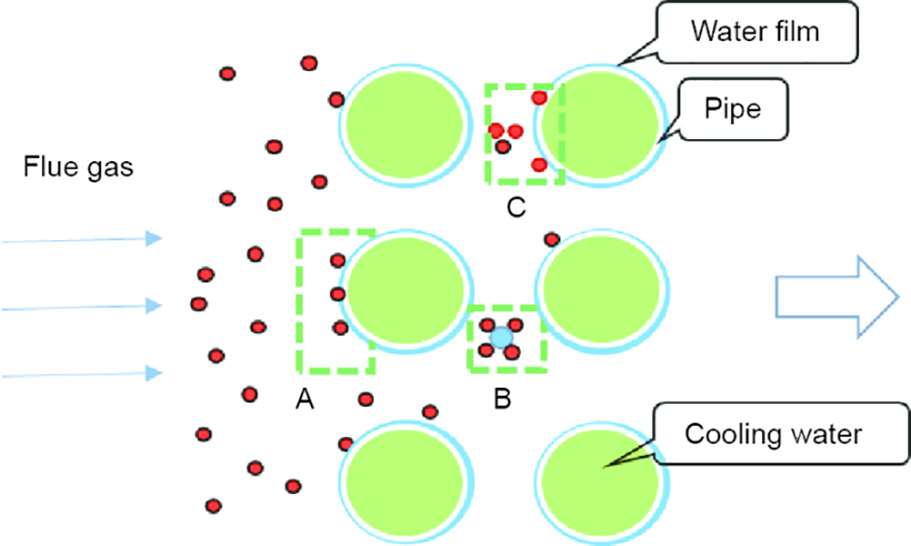
Fig.1.The principles of PAT.Box A: particles adhere to the water film; box B:agglomeration of particles and droplets; box C:surface condensation of condensable particles.
《2.2.PAD process design》
2.2.PAD process design
The PAU can promote the agglomeration of fine particles and the transition of water vapor into liquid water droplets. However, it is necessary to install follow-up devices to remove fine particles and water droplets effectively. At present,the follow-up devices are the WESP or the mist eliminator (ME).PAD, which combines a PAU with follow-up devices, has a higher removal efficiency of SO3, dissolved salts, and PM2.5 than that of a WESP or ME. Moreover, PAD can efficiently remove ultra-fine particles with a diameter less than 1.0 lm. Without a PAU, WESP or ME cannot efficiently remove condensable particles and soluble salts; PAD magnifies the advantages of these devices and overcomes their individual technological deficiencies. In the ultra-low-emission technology that is based on WESP after WFGD, the PAU is arranged in the front of the WESP, and replaces the rectifier grille of the WESP. The combination of a PAU and a WESP forms the integrated technology of phase-transition agglomeration and a wet electrostatic precipitator (PAW). A diagram of a PAW system is shown in Fig. 2. For an ultra-low-emission technology route without a WESP, a PAU and an ME can be arranged together after desulfurization to form the integrated technology of phase-transition agglomeration and a mist eliminator (PAM), as shown in Fig. 3.
《Fig. 2》
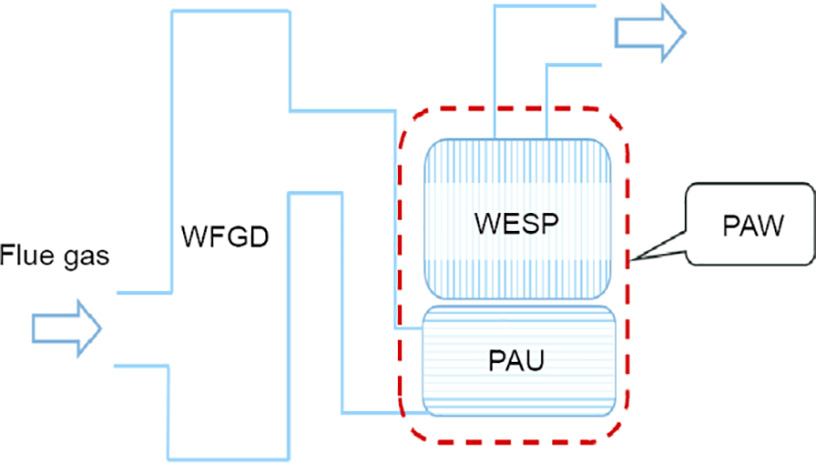
Fig.2.Diagram of a PAW.
《Fig. 3》
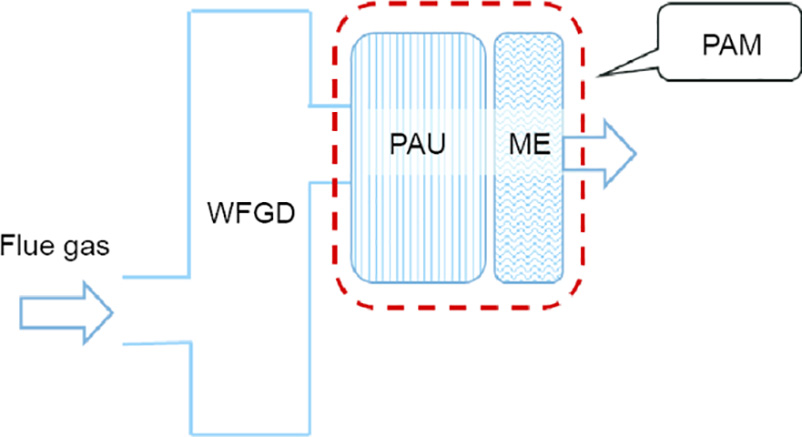
Fig.3.Diagram of a PAM.
《2.3.Industrial technical parameters》
2.3.Industrial technical parameters
The PAW was first applied to a 630 MW coal-fired unit in Jiangsu Province, China. The main industrial technical parameters of this system are provided in Table 1.
The PAM was first applied to a 1000 MW coal-fired unit in Shanghai. The main industrial technical parameters of this system are provided in Table 2.
《Table 1》
Table 1 Technical parameters of the PAM.

《Table 2》
Table 2 Technical parameters of the PAM.
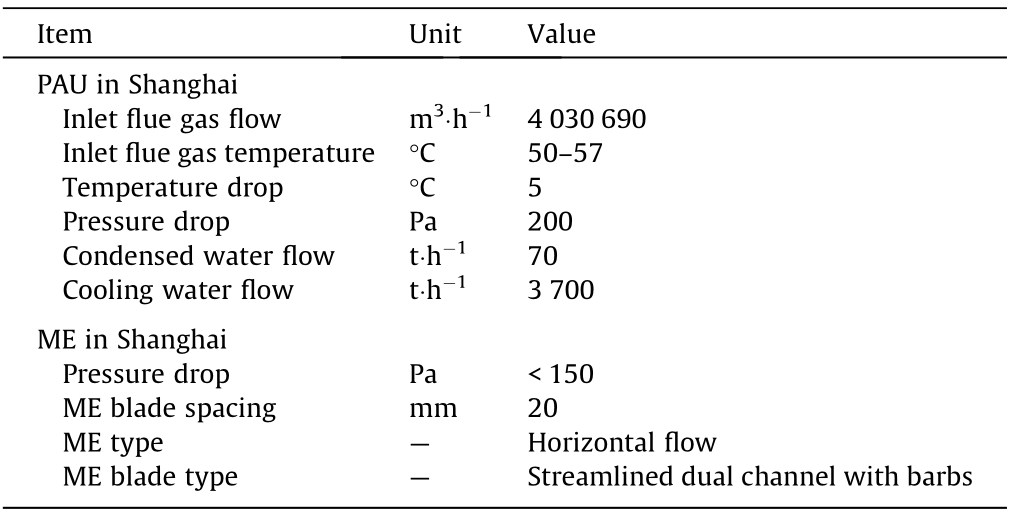
《3.Results and discussion》
3.Results and discussion
《3.1.Moisture-recycling performance of PAD》
3.1.Moisture-recycling performance of PAD
For the PAW on the 630 MW coal-fired unit in Jiangsu Province, the amount of recycled water was 15 t ·h-1 when the wet flue gas temperature was decreased from 53.7 to 52.2°C with a running load of 600 MW. The average amount of recycled water was 4.05 g per kilogram of dry flue gas under standard conditions when the temperature dropped by 1°C. Recycled water accounted for 5.7% of the total water in the flue gas, as shown inTable 3.
《Table 3》
Table 3 Moisture-recycling performance of PAD.
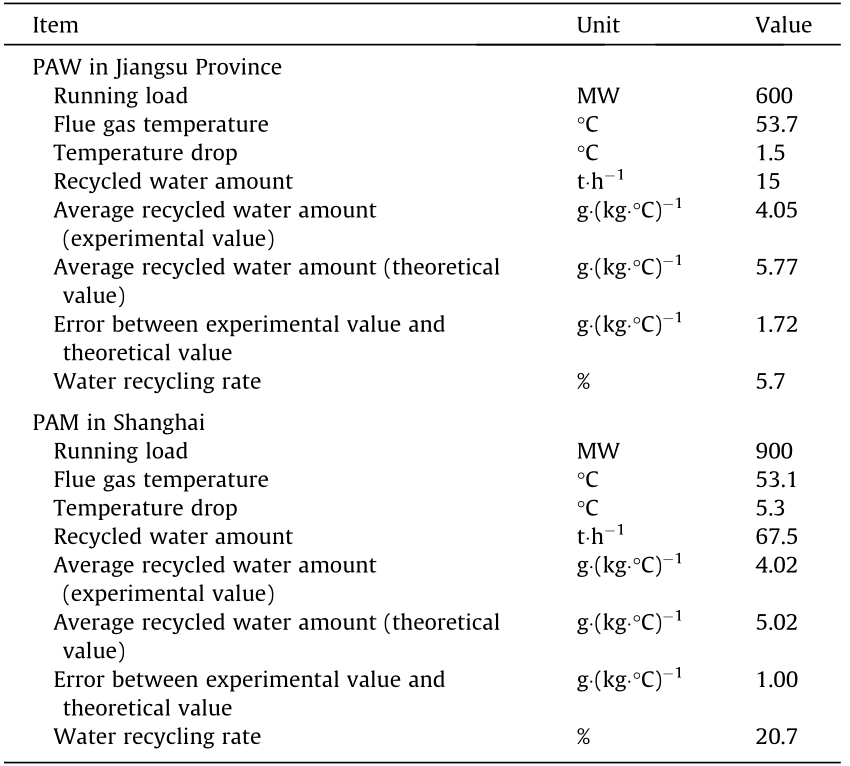
For the PAM on the 1000 MW coal-fired unit in Shanghai, the amount of recycled water was 67.5 t· h-1 when the wet flue gas temperature was decreased from 53.1 to 47.8°C with a running load of 900 MW. The average amount of recycled water was 4.02 g per kilogram of dry flue gas under standard conditions when the temperature dropped by 1°C. Recycled water accounted for 20.7% of the total water in the flue gas, as shown in Table 3. Zhou[16] found that the moisture-recycling rate was only 28.78% when the flue gas temperature decreased from 180 to 50°C. The data in Table 3 indicate that PAD is advanced compared with previously studied systems.
The recycled water in the power plants in Jiangsu Province and Shanghai was deposited and filtrated. The treated water was then used as the supplemental water for the WFGD system.
Water vapor condensation in the ambient air is the main factor in moist plume formation. PAD can recycle moisture to eliminate the moist plume by reheating flue gas with a lower temperature rise. Fig. 4 provides a comparison of the moist plume from chimneys equipped with PAD and without PAD in Shanghai. The temperature of flue gas emitted from the chimney equipped with PAD is 55.1°C, and the temperature rise is 7.3°C.Fig.4 shows that there is no moist plume at the outlet of the chimney equipped with PAD, indicating that PAD is an effective technique for eliminating moist plumes.
《Fig. 4》
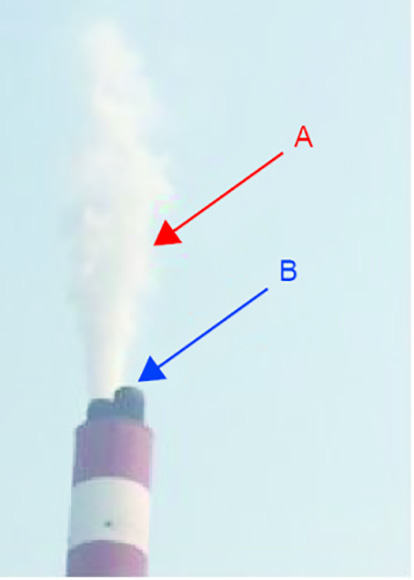
Fig.4.Moist plume comparison at the outlet of the chimney. A shows the moist plume at the outlet of the chimney without PAD; B shows no moist plume at the outlet of the chimney with PAD.
《3.2.Dissolved-salts-removal performance of PAD》
3.2.Dissolved-salts-removal performance of PAD
The dissolved salts in droplets are removed as the droplets are removed by PAD. In order to analyze the dissolved-salts-removal efficiency of PAD, anions in the condensed water were tested using anion chromatography system (Dionex ICS-2000), and cations were tested using a plasma beam spectrometer (Optima 7000 DV).
Fig.5 provides the ion-removal efficiency of PAW. The total ion-removal efficiency is greater than 75%. The conductivity of the condensed water was tested by conductivity meter (BEC950) and wasshown to decrease by 79.21% from 505 to 105μs cm-1, thus indicating that most of the ions were effectively removed by PAW. Fig.6 shows the ion-removal efficiency of PAM. The total ion-removal efficiency is 65%.
《Fig. 5》
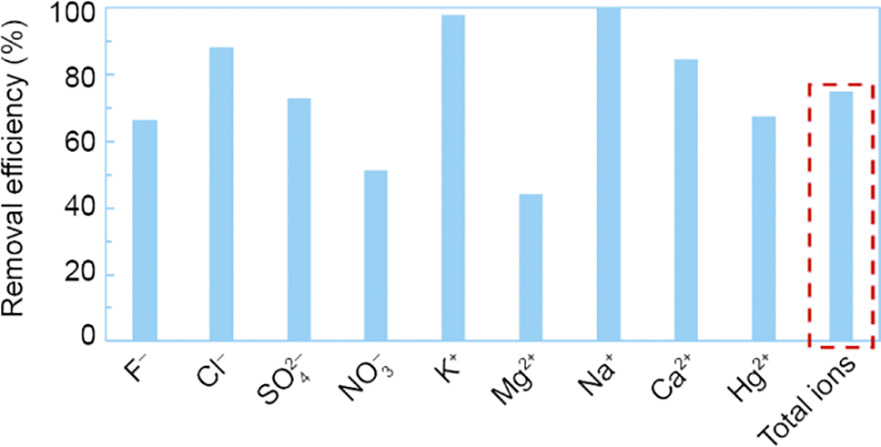
Fig.5.Ion-removal efficiency of the PAW.
《Fig. 6》
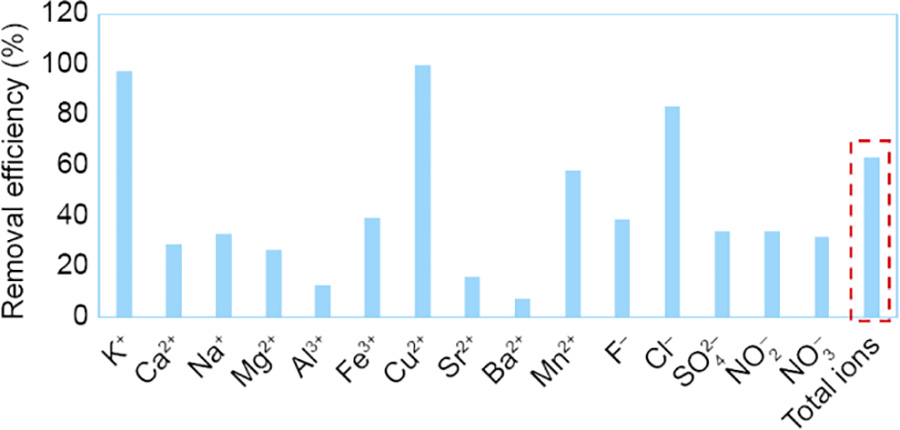
Fig.6.Ion-removal efficiency of the PAM.
The total ion-removal efficiency of PAW is greater than that of PAM, which may be because WESP can remove droplets in flue gas better than ME. Little information is available on the removal of dissolved salts in droplets of flue gas.
《3.3.SO3-removal performance of PAD》
3.3.SO3-removal performance of PAD
In order to analyze the SO3-removal effect of PAD on flue gas, the SO3 concentration at the inlet and outlet of the PAD was tested according to the Appendix C of the national standard—" Performance test method for coal-fired flue gas desulfurization equipment”(GB/T 21508–2008).
Fig. 7 gives the SO3-removal efficiency of PAW in Jiangsu Province and PAM in Shanghai. The SO3-removal efficiency of PAW is 90%, which is 25% higher than that of WESP, at 65%. The SO3- removal efficiency of PAM is 75.8%, which is 21.3% higher than that of ME, at 54.5%. Thus, the SO3-removal efficiency of PAW and PAM is greater than 75%. Test results showed that the SO3 mass concentration was 7.4 mg·m-3 (standard conditions, dry, 6% O2) for a full load of the 630 MW coal-fired unit in Jiangsu Province. The SO3 mass concentration was 1.6 mg·m-3 (standard conditions, dry, 6% O2) for a full load of the 1000 MW coal-fired unit in Shanghai. Efficient removal of SO3 by PAD can abate corrosion of the flue gas duct and chimney, while reducing the formation of secondary particles in the air.
《Fig. 7》

Fig. 7. SO3 -removal efficiency of PAD.
《3.4.Particulate-matter-removal performance of PAW》
3.4.Particulate-matter-removal performance of PAW
In order to analyze the fine-particle-removal effect of applying PAW,the concentration of fine particles was tested according to the standard of China’s electric power industry—" Specifications for fine particles (PM2.5) monitoring in the thermal power plants—gravimetric method”(DL/T 1520–2016) and"Determination of the particulates and sampling methods of gaseous pollutants emitted from exhaust gas of stationary source”(GB/T 16157–1996).
Fig. 8 shows the mass percentage of fine particles with different diameters at the inlet and outlet of the PAW. Table 4 provides the removal efficiency for particles with different diameters. Fig. 8 shows that the mass percentage of ultra-fine particles (with a diameter smaller than 1.0 μm) at the outlet of the PAW obviously increases when PAU is turned off. The rate of increase is at its maximum for ultra-fine particles with a diameter between 0.1 and 1.0lm; the next highest rate of increase is for ultra-fine particles witha diameter smaller than 0.1 lm. This result indicates that the WESP has a low removal efficiency for ultra-fine particles with a diameter between 0.1 and 1.0 μm, which is consistent with the results in Table 4.
《Fig. 8》
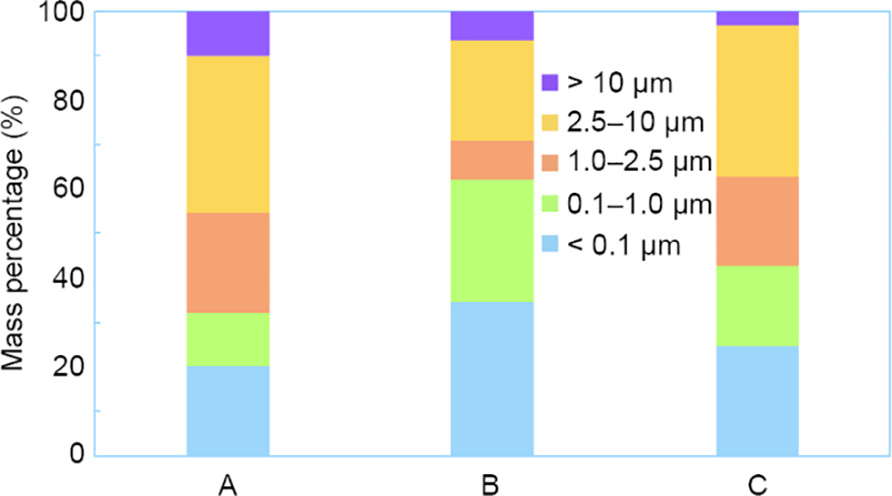
Fig.8.Mass percentage of particles with different diameters. A represents the inlet of PAW; B represents the outlet of PAW with PAU turned off; C represents the outlet of PAW with PAU turned on.
《Table 4》
Table 4 Removal efficiency of particles with different diameters.

When the PAU is put into operation,the mass percentage of fine particles discharged from the PAW decreases, which indicates that the PAU can promote the agglomeration of fine particles and improves their removal efficiency[17]. Test results for PAW show that it increases the removal efficiency of ultra-fine particles with a diameter less than 1.0 μm by more than 10%. The total particulate removal efficiency is 92.53%.
《4.Conclusions》
4.Conclusions
Through theoretical analysis and industrial testing, the removal efficiency of PAD for SO3, water with dissolved salts, and particles in wet flue gas was analyzed. The conclusions are as follows:
(1)The average amount of recycled water from PAD is greater than 4 g(kg°C)-1. When the wet flue gas temperature is decreased by 1.5–5.3°C, 5%–20% of the moisture in flue gas can be recycled. This process can thus effectively save water resources and significantly reduce water vapor emissions.In addition, it effectively eliminates moist plumes.
(2)The ion concentration in droplets of flue gas measured at the outlet of PAW decreased by 75% after passing through the system, and that of PAM decreased by 65%.
(3)PAD can promote the removal performance of gaseous acidic substances.Its SO3-removal efficiency for flue gas is greater than 75%.
(4)PAU can promote the agglomeration of ultra-fine particles in flue gas. Compared with the WESP, PAW’s removal efficiency for ultra-fine particles with a diameter less than 1.0μm is more than 10% greater, and its total particle removal efficiency is 92.53%.
《Compliance with ethics guidelines》
Compliance with ethics guidelines
Jianmin Liu, Fahua Zhu, and Xiuyuan Ma declare that they have no conflict of interest or financial conflicts to disclose.














 京公网安备 11010502051620号
京公网安备 11010502051620号




